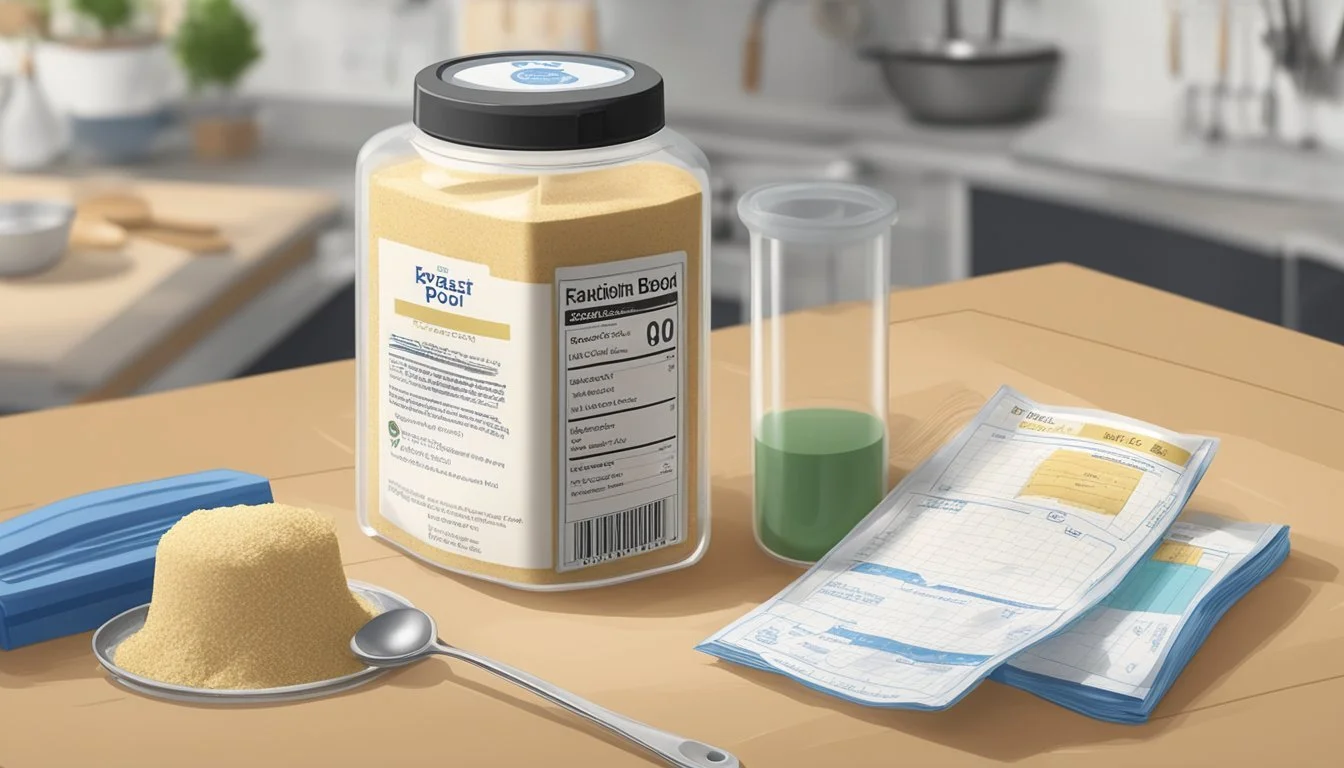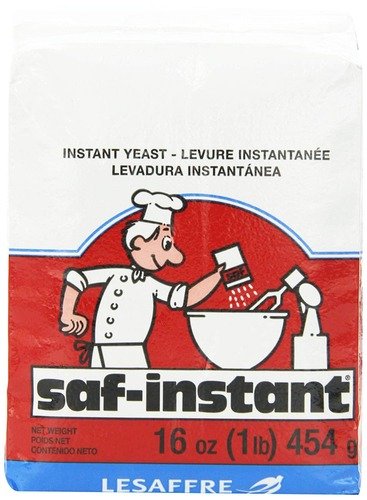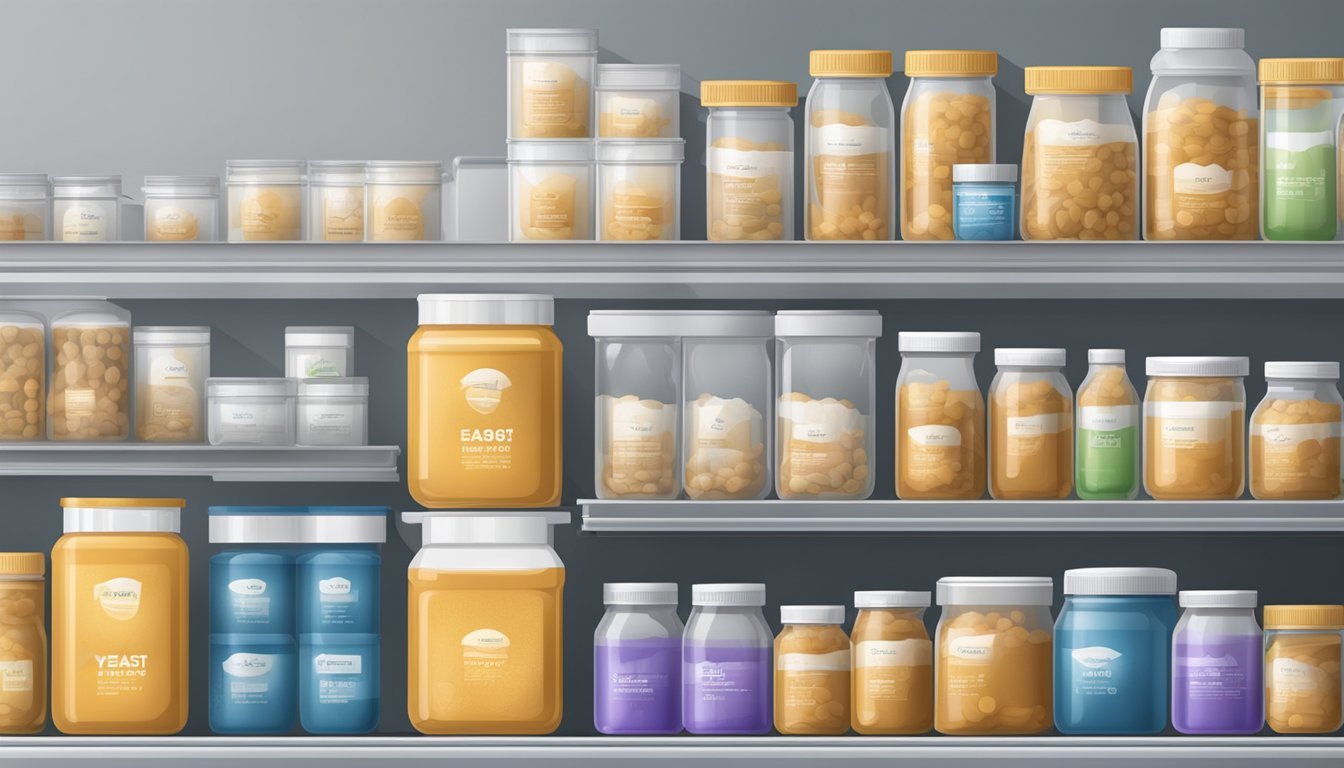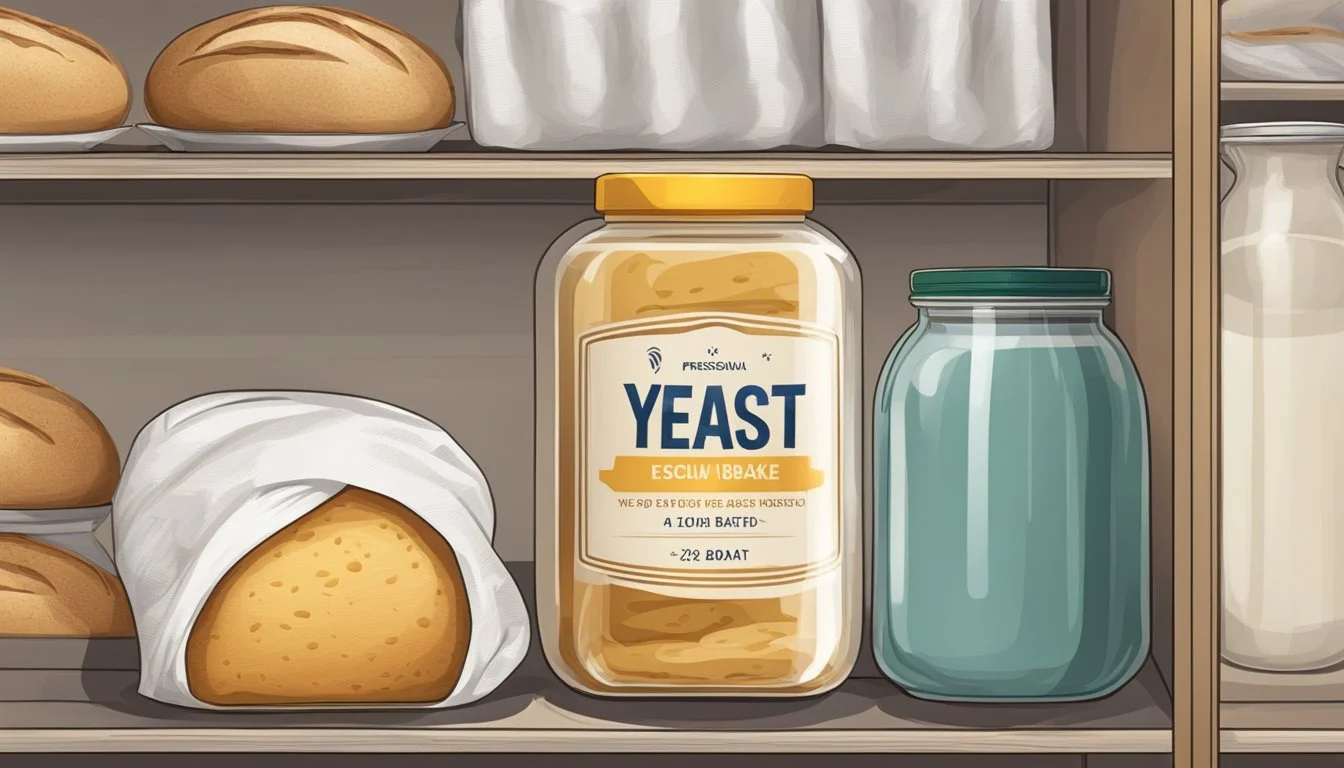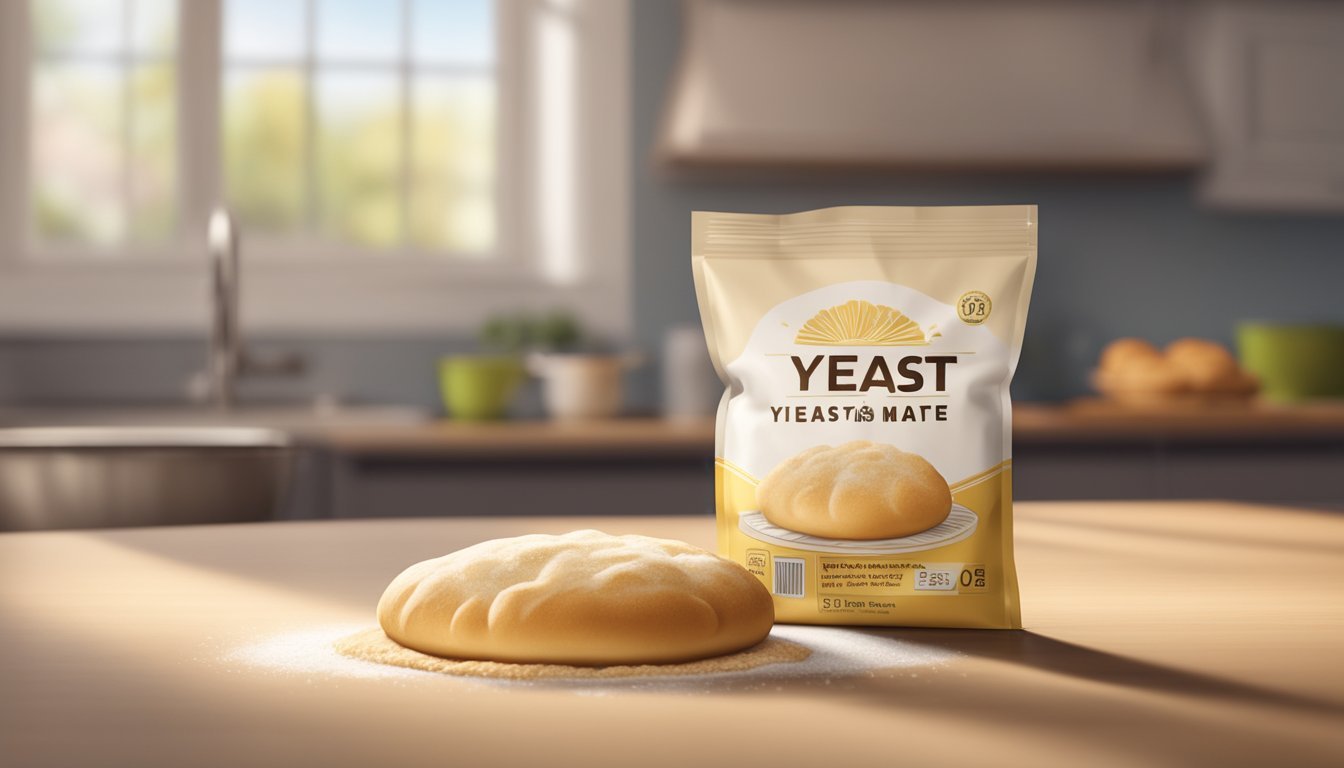How Long Does Yeast Last?
Shelf Life and Storage Tips
Yeast is a pivotal ingredient in baking, serving as the leavening agent in bread and other baked goods. Its role is to ferment sugars present in the dough, producing carbon dioxide that causes the dough to rise, resulting in the soft, airy texture that is characteristic of breads, rolls, and various other recipes. The shelf life of yeast is of particular interest to bakers because its potency directly affects the success of their baking endeavors.
Dry active yeast, the most common type found in home bakeries, generally maintains its effectiveness for 4 to 6 months when stored in the freezer. However, it often comes with a best-before date rather than a use-by date, suggesting it may be potent even beyond the indicated period if stored properly. The freshness and viability of yeast can be tested through a process known as proofing, which involves combining it with warm water and sugar and observing for the production of bubbles or foam, indicating that the yeast is alive and active.
Fresh yeast, also known as compressed or cake yeast, typically lasts for about 2 weeks in the refrigerator and is not recommended for freezing due to its high moisture content. Bakers must ensure the right storage conditions for yeast, as excessively high temperatures can kill it, whereas too low temperatures may reduce its activity, both of which can result in baking failures. Hence, understanding yeast's shelf life and storage requirements is essential for reliable baking results.
Understanding Yeast
Yeast is a crucial ingredient in baking that acts as a leavening agent, allowing dough to rise. It is a living organism that comes in various forms, each with a different role in the baking process.
Types of Yeast
Active Dry Yeast: This is a granulated form of yeast, which is dormant until activated by warm water, generally around 110°F. It requires proofing, which involves dissolving it in warm water and sometimes a pinch of sugar before adding it to the dough.
Instant Yeast: Also known as rapid-rise or quick-rise yeast, this type can be mixed directly into the dough without dissolving it in water first. Instant yeast has smaller granules compared to active dry yeast and works more quickly.
Fresh Yeast: Known as cake yeast or compressed yeast, this type is sold as a solid block and has a high moisture content. It's highly perishable and should be dissolved in warm water before use.
Compressed Yeast: Similar to fresh yeast, it comes in a cake form and is also considered a type of fresh yeast.
How Yeast Works in Baking
When yeast is added to dough, it begins to consume the sugars present, either added as an ingredient or naturally found in the flour. As the yeast metabolizes the sugars, it produces carbon dioxide and alcohol, which causes the dough to rise as the gas gets trapped in the dough's network of gluten strands. The result is a light and airy structure in the baked goods. Additionally, yeast contributes to the flavor and texture of the baked product.
Proofing Step:
Active Dry & Fresh Yeast: Mix with warm water (105°F - 115°F) to activate.
Instant Yeast: Can be added directly to dry ingredients.
Sugar's Role: Often added to proofing mixture to "feed" the yeast, accelerating its action.
Rising Process: Yeast's gas production enables the dough to expand and rise.
It is important to note the temperature of water when working with yeast. Water that is too hot can kill the yeast cells, while water that is not warm enough may not activate them effectively. Careful adherence to temperature guidelines ensures that yeast performs its role in dough development properly.
If you can’t find these ingredients in your local markets, you can order instant yeast online!
Proper Yeast Storage
Maintaining yeast viability hinges on optimal storage conditions and understanding the varied shelf lives depending on the type of yeast.
Best Storage Conditions for Yeast
Dry Yeast:
Store in a cool, dry place such as a pantry or cupboard, away from moisture and heat.
After opening, transfer to an airtight container to prevent exposure to air and moisture which can decrease its potency.
For long-term storage, place the sealed container in the refrigerator or freezer. This helps preserve the yeast's activity.
Fresh Yeast:
Since it's more perishable, refrigerate immediately after purchase in an airtight container.
To extend freshness beyond its typical short shelf life, freezing is an option, but it may slightly reduce its rising power upon thawing.
Shelf Life of Different Yeast Types
Yeast Type Pantry Refrigerator Freezer Unopened Dry Yeast Up to 2 years* Not advised Not advised Opened Dry Yeast Not recommended Up to 4 months** Up to 6 months** Fresh Yeast Not recommended 1-2 weeks Up to 3 months**
**Assuming optimum conditions in an airtight container.
*Temperature should be consistent and cool. Fluctuating temperatures can diminish yeast viability. Always check for expiration.
**Make sure to tightly seal the container each time you use the yeast to retain its freshness.
Trust me, the easiest way to buy airtight container is through online retailers!
Maintaining Yeast Freshness
Maintaining yeast freshness is pivotal for successful baking. Proper storage techniques can significantly extend yeast's shelf life, ensuring active fermentation when needed.
Indicators of Yeast Freshness
Yeast is considered fresh if it has a uniform color, devoid of any dark spots or clumps. Over time, yeast may develop mold or an off odor, signaling that it is no longer fresh. For dry yeast, freshness can often be identified by the yeast's ability to be readily dissolved in water. In the case of cake yeast, the texture should be moist and crumbly.
How to Test Yeast Viability
One reliable method to test yeast viability is through proofing, which helps determine if the yeast is active. This is done by dissolving a small amount of yeast in warm water (100-110°F), and then adding a pinch of sugar. The yeast should begin to ferment, creating bubbles and froth within approximately 10 minutes. If the mixture foams and increases in volume, the yeast is active and ready for use. Lack of activity suggests that the yeast may be expired or no longer viable for leavening.
Using Yeast in Recipes
Yeast is a critical ingredient in many baking recipes, especially for bread. It is responsible for the dough's rise that leads to light and fluffy baked goods. Using yeast properly requires understanding how to activate it, what ingredients can interact with it, and how to troubleshoot common issues.
Activating Yeast
To activate yeast, a baker typically dissolves it in warm water with a small amount of sugar. The water temperature should ideally be between 105°F to 110°F. Proofing is a test for viability where one observes bubbles or foam formation after about 10 minutes, indicating the yeast is alive and ready to help the dough rise.
Ingredients That Affect Yeast Activity
Certain ingredients can either enhance or hinder yeast activity during the baking process. Sugar provides food for yeast, facilitating its growth, while excessive amounts can dehydrate and kill it. The environment’s pH also matters, with mild acidity (like from lemon juice or vinegar) aiding yeast growth. Conversely, a high pH environment can be detrimental.
Enhancers: Sugar, acidic substances (lemon juice, vinegar)
Inhibitors: Extreme pH levels, excessive salt
It is important to mix yeast with the flour and other dry ingredients like baking soda or baking powder, which can affect the rising process when not properly balanced.
Troubleshooting Common Yeast Issues
If dough is not rising, check if the yeast was properly activated. Overly hot water can kill yeast, while too cool water won't activate it. Use a thermometer for precision. If yeast is active but the bread isn’t rising in the oven, the issue might lie with other ingredients or dough preparation. Check for expired baking powder or soda, and ensure correct measurements to maintain an environment conducive for yeast activity.
Yeast Shelf Life
Yeast, a crucial ingredient in baking, has varying shelf lives depending on its form and storage conditions. How long it lasts can impact its viability and performance in recipes. Here are important factors to consider regarding yeast's longevity.
Identifying Expired Yeast
Unopened dry yeast can last up to two years past its 'best before' date if stored in a cool, dry place. The expiration date on yeast serves as a guideline, and it can often be used beyond this date if it has been stored properly. One should check the viability of yeast by proofing, which involves mixing a small amount with water and sugar; active yeast will bubble and expand. No activity suggests that the yeast is expired and should not be used.
Extending Yeast Life Through Freezing
Freezing can extend the shelf life of dry active yeast, usually up to four to six months. When freezing, it is important to seal the yeast in an air-tight container to prevent moisture from reducing its efficacy. Compressed or cake yeast, however, is not recommended for freezing. To utilize frozen yeast, defrost it in the refrigerator and then allow it to come to room temperature before use. For those who purchase yeast in bulk, storing it in the freezer can be a practical way to maintain freshness and extend shelf life.
When it comes to dry active yeast, online shopping is the way to go!
Food Safety and Yeast
Ensuring food safety when using yeast involves recognizing the risks of using spoiled yeast and adhering to hygienic handling and preparation practices. Proper storage and visual inspections for spoilage indicators are critical steps to maintain yeast quality and safety.
Risks of Using Spoiled Yeast
One should be aware of the potential risks associated with using spoilt yeast. While spoilage does not typically make yeast hazardous to consume, it can lead to poor results in baking. Spoiled yeast may result in dough that does not rise due to inactive organisms within the yeast. Signs of spoilage include:
An off odor, typically sour or alcoholic, indicating contamination or degradation.
Mold growth, which appears as discolored spots or fuzzy areas.
Clumping, which suggests the yeast has been exposed to moisture and may harbor unwanted organisms. The presence of mold or a rancid smell requires immediate disposal of the yeast, as mold can be a food safety risk.
Hygienic Handling and Preparation
When handling yeast, good hygiene practices can minimize the risk of contamination and extend its usability. Below are guidelines for hygienic handling and preparation of yeast:
Store yeast properly: Keep it in a cool, dry place to reduce the risk of spoilage. Yeast's shelf life can be extended by refrigeration or freezing in a tightly sealed container.
Check before use: Before adding yeast to any recipe, inspect it for signs of spoilage such as mold or a sour smell.
Follow usage instructions: To ensure the best results, adhere to the recommended water temperatures during proofing, as overly hot water can kill yeast cells.
Avoid cross-contamination: Use clean utensils and avoid contact with food residues or other contaminants that can introduce harmful organisms to the yeast.
By maintaining a clean environment and following proper storage guidelines, one can ensure both the effectiveness of the yeast and the safety of the foods prepared with it.
Discover the endless possibilities of buying airtight containers online!
Tips for Yeast Substitutions
Navigating the world of yeast substitutions in baking requires an understanding of both the timing and the chemical reactions involved in using alternatives.
When to Use Yeast Alternatives
Yeast alternatives come into play when a recipe calls for yeast, but none is available or when the yeast on hand has expired. Bakers might also opt for substitutes to avoid the waiting time that yeast fermentation demands or to cater to dietary restrictions.
Acid and Baking Soda: Combining baking soda with an acid such as lemon juice, vinegar, or buttermilk can mimic yeast's leavening effect. Use equal parts to replace yeast in a recipe.
Double-Acting Baking Powder: This contains both cream of tartar and baking soda and can cause dough to rise quickly. It's often used in a ratio of 1:1 for expired yeast.
How Substitutions Affect Baked Goods
Using alternatives affects the texture and rise of baked goods. Yeast creates carbon dioxide bubbles slowly, contributing to a distinct texture and flavor in bread. Substitutes result in a different chemical reaction and can change the characteristics of the final product.
Chemical Reactions: Acid and baking soda react instantly, producing carbon dioxide and causing the dough to rise quickly without the need for proofing time.
Texture Variations: Substitutions can lead to baked goods that have a different crumb structure and may not rise as much as when yeast is used, potentially yielding denser breads.
By carefully considering when to use alternatives and how they will affect the final baked product, bakers can successfully substitute yeast and still produce delightful results.
Understanding Yeast Efficacy
Yeast is a living organism whose effectiveness in baking or brewing is dictated by its potency and how well it can produce carbon dioxide through fermentation. The activity and viability of yeast are crucial for the desired end product's texture and rise.
Factors Influencing Yeast Potency
Potency and Activity: Yeast potency, often referred to as its activity, is essential for its ability to ferment sugars into carbon dioxide and alcohol. This fermentation is what causes dough to rise and lends texture to baked goods.
Type of Yeast: Different types of yeast, such as instant dry yeast and dry active yeast, have varying shelf lives. Instant dry yeast tends to last longer and can directly be added to dry ingredients, while active dry yeast needs to be dissolved in water first.
Moisture and Storage: Yeast's effectiveness is highly affected by exposure to moisture. Yeast should be stored in a dry and airtight container to maintain its potency.
Storage Condition Potency Duration Unopened (Dry Yeast) Up to two years Refrigerator (Opened) 4 to 6 months Freezer (Opened) Several months
Temperature: For optimal organic growth and activity, yeast requires a specific temperature range. Too hot, and it will die; too cold, and it will not activate properly.
Expiry: While yeast has a best before date rather than an expiration date, its effectiveness can decline past this point.
In summary, yeast's effectiveness for leavening is influenced by its storage, temperature, and how long it is kept after opening. Following these guidelines will ensure that yeast retains its potency for fermentation, crucial in achieving the desired texture and rise in baked goods.


